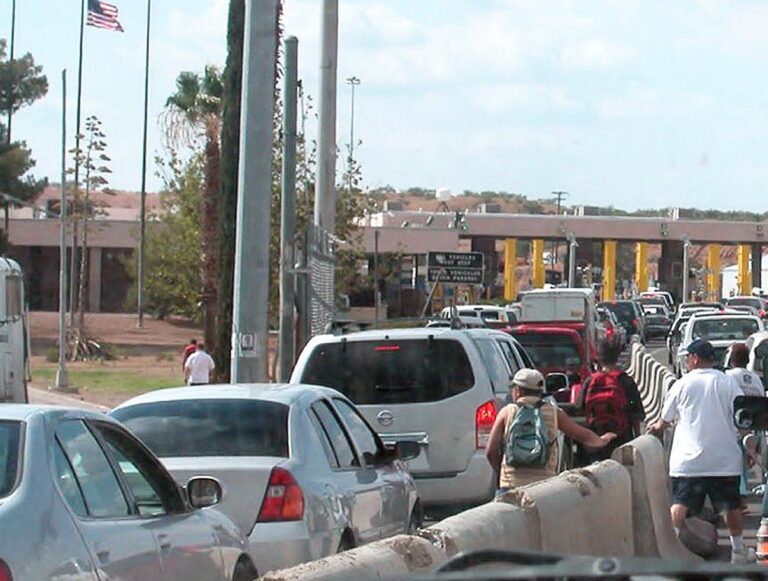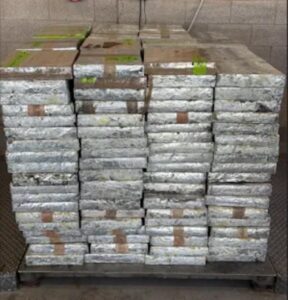SAN LUIS, Ariz. — The U.S. General Services Administration (GSA) and the U.S. Department of Homeland Security Customs and Border Protection (CBP) recently hosted a groundbreaking ceremony with local, state and federal officials to commemorate the launch of the $308 million project to modernize and expand the San Luis I Land Port of Entry in Arizona.
Money for the project comes through the Investing in America Agenda. the Bipartisan Infrastructure Law and the Inflation Reduction Act, according to a news release, which also notes that the project will replace the port’s undersized 1980s infrastructure with new, expanded buildings and increased inspection capacity.
As the second busiest non-commercial port in Arizona, San Luis I currently serves 3 million drivers and 2.5 million pedestrians annually.
Once the renovations are completed, the port will boast a 40% increase in pedestrian inspection capacity and a 100% increase in vehicle inspection capacity, the news release notes.
“We must invest in providing border communities the tools they need to thrive,” said Arizona Gov. Katie Hobbs. “With today’s groundbreaking, we are on the path to making that happen. My administration is working hard to ensure we fully leverage the megaregion as a single asset and work closely with our partners south of the border, because their success is our success. This groundbreaking is only the beginning.”
The project will double the number of northbound vehicle inspection lanes from eight to 16, install a 16,000 square-foot canopy and support installation of the latest inspection technology to support CBP’s security mission.
The project also includes a new 21,000-square-foot pedestrian inspection building, increasing the number of inspection booths from 10 to 14, and improving the flow of pedestrian traffic.
Approximately $100 million in funding through the Inflation Reduction Act will enable the project’s sustainability features.
“The port’s new all-electric and net-zero design integrates numerous water-saving and energy-production features,” the news release states. “These are buildings where the clean energy generated on-site offsets the total energy used, resulting in zero net energy consumption. Additional sustainability features include solar panels and other clean energy sources to reduce the port’s operational emissions, eliminate its reliance on carbon-based energy, and support environmental justice in the community.”
Arizona Democratic Sen. Mark Kelly called the San Luis Port “a major economic engine for Yuma County and the entire state of Arizona. I’m proud to have worked alongside local leaders and Customs and Border Protection to secure the funding needed for these upgrades at the port that will increase trade, decrease wait times and improve our ability to stop fentanyl and other illegal trafficking across the border.”
GSA Port Administrator Robin Carnahan called the investment historic.
“We’re making this project a model for land ports across our southern and northern borders — enhancing security, creating good-paying jobs and improving sustainability while also strengthening supply chains and spurring regional economic activity,” she said.
CBP Executive Director Donald R. Stakes said his agency “takes great pride in our mission at the ports of entry — which is to ensure national security and promote economic prosperity. Meeting this critical mission at the ports requires the right balance of a professional workforce, state-of-the-art inspection technology and modernized infrastructure. The investments made in San Luis I will provide a port of entry designed to increase processing capacity, better detect high-risk cross-border activity, and foster the continued economic growth of the city of San Luis, Yuma County, the state of Arizona, and the United States.”
Construction is scheduled to last through Fall 2028, with the port remaining fully operational for the duration.
The Trucker News Staff produces engaging content for not only TheTrucker.com, but also The Trucker Newspaper, which has been serving the trucking industry for more than 30 years. With a focus on drivers, the Trucker News Staff aims to provide relevant, objective content pertaining to the trucking segment of the transportation industry. The Trucker News Staff is based in Little Rock, Arkansas.








